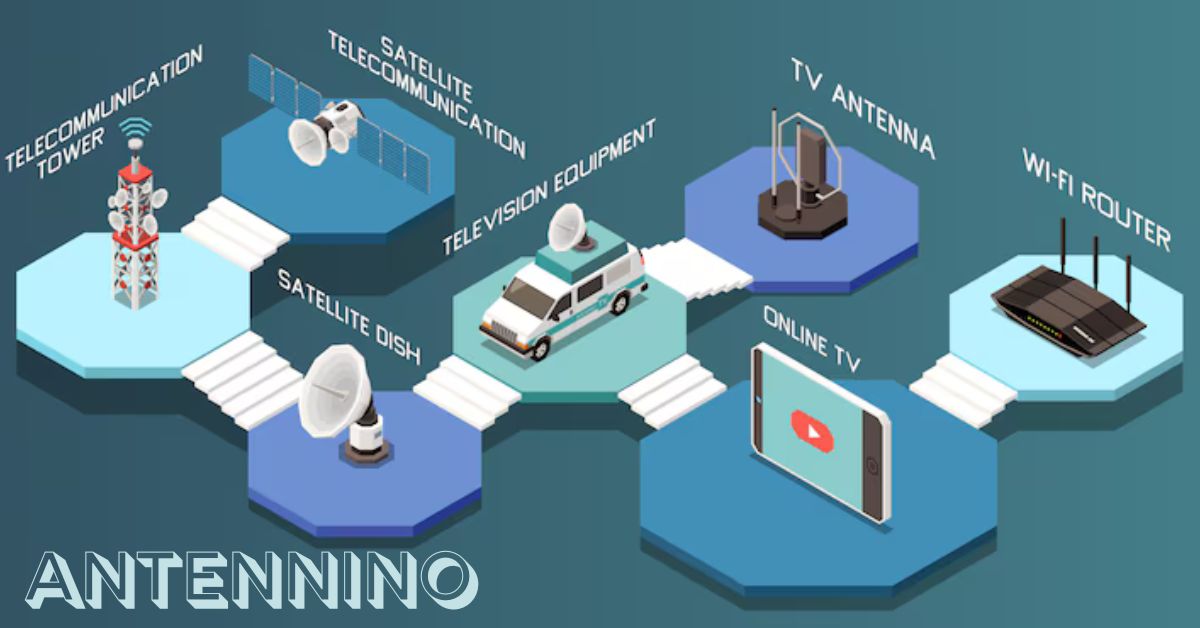Antennino is a powerful yet compact open-source DIY IoT platform designed for radio-frequency communication and automation projects. Targeted at makers, tech enthusiasts, and hobbyists, Antennino blends simplicity with functionality, allowing users to build wireless systems for a variety of applications without deep technical knowledge. It’s the perfect entry point for learning about RF communication, microcontrollers, and IoT without breaking the bank or facing steep learning curves.
What Makes Antennino Unique
Antennino stands out due to its focus on radio-based communication, unlike many other IoT platforms that heavily rely on Wi-Fi or Bluetooth. It is designed to function in environments where these traditional methods fall short, such as remote or rural areas. Its open-source nature, low cost, and ease of assembly make it accessible to a wide audience.
History and Origins of Antennino
The Antennino project was born in the maker community as a response to the need for a modular and easily replicable RF node. It evolved through experimentation and the sharing of ideas on online forums. Created with simplicity and learning in mind, it was built to encourage radio communication experimentation and automation, particularly in situations where internet-based solutions were impractical.
Hardware Features of Antennino
Antennino typically uses the ATmega328P microcontroller—the same chip used in Arduino Uno boards—allowing for Arduino IDE compatibility. It is designed to work seamlessly with RF modules such as RFM69 or RFM95 (LoRa), enabling low-power, long-distance communication. It includes headers for sensors, an onboard voltage regulator, and a simple power management setup for battery operation.
Software Compatibility and Programming
Programming Antennino is as straightforward as programming any Arduino board. It supports the Arduino IDE, which means beginners can jump into coding with ease. It uses standard Arduino libraries, and many community-contributed libraries exist specifically for the RFM module family. This compatibility makes it ideal for educational use, prototyping, and experimentation.
Applications in Smart Home Automation
Antennino nodes are perfect for creating custom home automation solutions. They can be used to monitor temperature, humidity, doors/windows, light levels, and even soil moisture. Because of its low power requirements, Antennino devices can run on batteries for months, making them ideal for remote placement throughout a home or garden without the need for wiring.
Using Antennino in Environmental Monitoring
One of the most practical uses for Antennino is in environmental sensing. Makers and DIYers can deploy nodes in forests, gardens, or greenhouses to monitor weather conditions, air quality, and soil health. Because of its long-range RF communication, data can be sent to a central receiver or base station without requiring cellular or Wi-Fi networks.
Integration with MQTT and Home Assistant
Antennino can communicate with home automation software like Home Assistant via MQTT protocol. Users can connect a gateway (often a Raspberry Pi) to receive RF data and convert it into MQTT messages that integrate with dashboards, alarms, or automation triggers. This opens up extensive customization possibilities for smart living.
Antennino and LoRa Technology
LoRa (Long Range) modules like RFM95 can be used with Antennino to extend communication distances significantly. This makes it especially useful in rural setups, farming, or outdoor events. The combination of Antennino and LoRa is a cost-effective way to build private networks for IoT communication with high range and minimal energy usage.
Power Management and Battery Efficiency
One of the strong points of Antennino is its ultra-low power consumption. It supports sleep modes, which help extend battery life dramatically. Using efficient sensors and optimized code, users can deploy battery-powered Antennino nodes that last up to a year, depending on how frequently they transmit data.
Expanding Antennino with Sensors
Antennino is compatible with a wide range of sensors, including DHT22 for temperature/humidity, PIR motion detectors, light sensors, gas sensors, and soil probes. Its flexibility allows creators to mix and match sensors for custom applications, and the availability of code examples makes setup easy for beginners.
Building a Network of Antennino Nodes
Multiple Antennin’o nodes can be connected to a single base station to form a mesh or star network. This scalability is great for larger properties, agricultural fields, or industrial monitoring setups. Each node can be uniquely identified and assigned specific tasks, creating a robust and versatile monitoring system.
Security Considerations for Antennino Projects
RF communication can be vulnerable if not secured properly. Fortunately, the RFM69 module includes built-in encryption (AES-128), and developers are encouraged to implement secure coding practices to prevent spoofing or unauthorized access. Ensuring physical security and updating firmware regularly adds additional layers of protection.
Educational Benefits of Antennino
Antennin’o is widely appreciated in educational contexts. It offers a hands-on approach to learning electronics, programming, and wireless communication. Schools, workshops, and STEM programs can use Antennin’o kits to teach real-world skills in a fun, engaging way. The open-source community ensures that students have access to tutorials and support.
Antennino vs. Traditional IoT Platforms
While platforms like ESP8266/ESP32 dominate the Wi-Fi-based IoT space, Antennin’o carves out its niche in RF communication. It doesn’t depend on internet connectivity, making it more reliable in power outages or remote areas. Compared to ZigBee or Z-Wave, Antennin’o is more affordable and flexible for tinkerers.
Challenges When Working with Antennino
Despite its many strengths, working with Antennin’o comes with learning curves. Setting up RF modules can be tricky for beginners. Interference, range limitations, and debugging wireless communication require patience. However, strong community support, documentation, and pre-built examples help bridge these gaps.
Community and Open Source Support
The Antennin’o project is supported by a growing community of developers and makers. Forums, GitHub repositories, and social media groups share designs, improvements, and tutorials. Contributions are encouraged, and because the project is open-source, users can modify it freely to suit their specific needs.
How to Get Started with Antennino
Getting started involves assembling the board (or buying a pre-built one), programming it using Arduino IDE, and testing with basic RF communication scripts. Many sellers and websites offer kits with all required components. From there, users can experiment with different sensors and gradually expand their projects.
Future of Antennino and IoT
Antennin’o represents the direction in which DIY IoT is heading—modular, flexible, affordable, and community-driven. With the increasing need for private, reliable communication networks and low-energy solutions, Antennino’s model fits well in future smart agriculture, disaster alert systems, and remote sensor networks.
Conclusion
Antennino is a remarkable tool that empowers creators to build powerful wireless systems with ease. Whether you’re interested in automating your home, monitoring the environment, or learning the nuts and bolts of IoT, Antennin’o delivers both power and simplicity. As the world of connected devices grows, platforms like Antennin’o will play a crucial role in shaping a smarter, more resilient technological future.
FAQS
What is Antennino used for?
Antennin’o is used to build wireless sensor networks, automate environments, and create long-range IoT systems without internet dependency.
Can I use Antennino without programming knowledge?
Yes, basic programming knowledge helps, but there are many examples and tutorials available to get you started even if you’re a beginner.
Does Antennino work with Wi-Fi or only RF?
Antennin’o primarily uses RF modules like RFM69 or RFM95 (LoRa), not Wi-Fi. It’s meant for low-power, long-range communication.
How far can Antennino communicate?
With standard RFM69 modules, up to 300-500 meters. With LoRa modules like RFM95, distances can exceed 2 kilometers under ideal conditions.
Where can I buy an Antennino kit?
Antennin’o kits can be found through maker communities, electronics hobby shops, or online platforms like Tindie and GitHub-linked stores.





